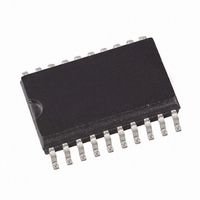ATA5724P3-TKQY Atmel, ATA5724P3-TKQY Datasheet - Page 8

ATA5724P3-TKQY
Manufacturer Part Number
ATA5724P3-TKQY
Description
IC RCVR ASK/FSK UHF 20-SSOP
Manufacturer
Atmel
Datasheet
1.ATA5723-DK.pdf
(46 pages)
Specifications of ATA5724P3-TKQY
Frequency
433MHz
Sensitivity
-113dBm
Data Rate - Maximum
10 kbps
Modulation Or Protocol
ASK, FSK
Applications
General Purpose
Current - Receiving
11mA
Data Interface
PCB, Surface Mount
Antenna Connector
PCB, Surface Mount
Voltage - Supply
4.5 V ~ 5.5 V
Operating Temperature
-40°C ~ 125°C
Package / Case
20-SOIC (0.200", 5.30mm Width)
Operating Temperature (min)
-40C
Operating Temperature (max)
105C
Operating Temperature Classification
Industrial
Product Depth (mm)
4.4mm
Operating Supply Voltage (min)
4.5V
Operating Supply Voltage (typ)
5V
Operating Supply Voltage (max)
5.5V
Lead Free Status / RoHS Status
Lead free / RoHS Compliant
Features
-
Memory Size
-
Lead Free Status / Rohs Status
Compliant
Available stocks
Company
Part Number
Manufacturer
Quantity
Price
Part Number:
ATA5724P3-TKQY
Manufacturer:
ATMEL/爱特梅尔
Quantity:
20 000
4.3
8
FSK/ASK Demodulator and Data Filter
ATA5723/ATA5724/ATA5728
The signal coming from the RSSI amplifier is converted into the raw data signal by the ASK/FSK
demodulator. The operating mode of the demodulator is set using the bit ASK/_FSK in the
OPMODE register. Logic L sets the demodulator to FSK, applying H to ASK mode.
In ASK mode an automatic threshold control circuit (ATC) is employed to set the detection refer-
ence voltage to a value where a good signal to noise ratio is achieved. This circuit also
implements the effective suppression of any kind of in-band noise signals or competing transmit-
ters. If the S/N (ratio to suppress in-band noise signals) exceeds about 10 dB the data signal can
be detected properly. However, better values are found for many modulation schemes of the
competing transmitter.
The FSK demodulator is intended to be used for an FSK deviation of 10 kHz
data signal in FSK mode can be detected if the S/N (ratio to suppress in-band noise signals)
exceeds about 2 dB. This value is valid for all modulation schemes of a disturber signal.
The output signal of the demodulator is filtered by the data filter before it is fed into the digital
signal processing circuit. The data filter improves the S/N ratio as its pass-band can be adopted
to the characteristics of the data signal. The data filter consists of a 1
order low-pass filter.
The high-pass filter cut-off frequency is defined by an external capacitor connected to pin
CDEM. The cut-off frequency of the high-pass filter is defined by the following formula:
In self-polling mode the data filter must settle very rapidly to achieve a low current consumption.
Therefore, CDEM cannot be increased to very high values if self-polling is used. On the other
hand, CDEM must be large enough to meet the data filter requirements according to the data
signal. Recommended values for CDEM are given in the electrical characteristics.
The cut-off frequency of the low-pass filter is defined by the selected baud-rate range
(BR_Range). The BR_Range is defined in the OPMODE register (refer to
ing the Receiver” on page
The ATA5723/ATA5724/ATA5728 is designed to operate with data coding where the DC level of
the data signal is 50%. This is valid for Manchester and Bi-phase coding. If other modulation
schemes are used, the DC level should always remain within the range of V
V
Each BR_Range is also defined by a minimum and a maximum edge-to-edge time (t
These limits are defined in the electrical characteristics. They should not be exceeded to main-
tain full sensitivity of the receiver.
fcu_DF
DC_max
= 66%. The sensitivity may be reduced by up to 2 dB in that condition.
=
------------------------------------------------------------ -
2
30 k
1
25). The BR_Range must be set in accordance to the baud-rate used.
CDEM
st
order high-pass and a 2
Section 11. “Configur-
DC_min
f 100 kHz. The
9106E–RKE–07/08
= 33% and
ee_sig
nd
).














